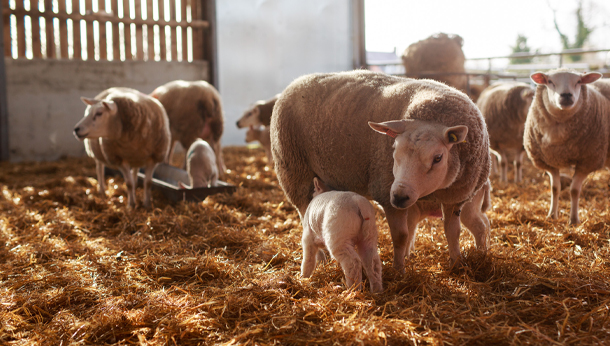
What is it?
Ovine pulmonary adenocarcinoma (OPA, also known as Jaagsiekte) is an infectious and fatal lung disease of sheep. Caused by a virus, known as Jaagsiekte sheep retrovirus (JSRV), it infects cells in the lung making them form tumours. The tumour cells then produce more of the virus which can infect new areas of the lung.
The Jaagsiekte retrovirus is spread through the air or direct contact with infected respiratory secretions and mucus. The virus may also be spread from ewe to lamb through milk or colostrum.
What are the signs?
Signs associated with OPA are loss of condition, difficulty breathing and, in around half of cases, production of clear or frothy fluid, appearing as discharge, dripping or pouring from the nose. The sheep may survive for many weeks after the signs of disease appear or may die suddenly, but the disease is fatal and there is no treatment at the present time.
There is a very long incubation period between infection and the development of disease. The number of animals in a flock that are infected with the virus may actually be much greater than the number that develop clinical signs of disease during their commercial lifespan.
Fatalities
In affected flocks, OPA may be the cause of death of 1% to 20% of the flock in one year. Additional productivity losses such as reduced fertility have yet to be investigated. It is important to note that the early stages of OPA are not always apparent as the tumours are too small to cause any breathing problems even though they are able to produce virus which can infect other sheep.
What to do if you suspect OPA
If you have animals that you suspect are suffering from OPA, you should isolate them from the flock and contact your vet immediately. We recommend post mortem examination of the lungs in order to confirm the diagnosis.
OPA doesn’t seem to be picky when it comes to breeds, with no strong evidence for any breed differences when it comes to susceptibility. OPA is commonly introduced into new flocks through the purchase of apparently healthy animals that are carrying the virus.
Tests to enable detection of infection in sheep, before they develop clinical signs of OPA are a focus of ongoing research. Ultrasound scanning can identify early OPA in sheep before any signs of disease begin to show and whilst the animal is still of some cull value. Unfortunately, ultrasound doesn’t give a definitive negative result for individual animals.
Although OPA was first described almost 200 years ago, methods for controlling the disease are limited. In recent years, great progress has been made in understanding how the virus triggers the growth of the cancer in the lung and research is advancing in the area of early detection.
If you have had OPA diagnosed in your flock and want to discuss control, arrange scanning your flock or have any questions regarding OPA, give us a call.